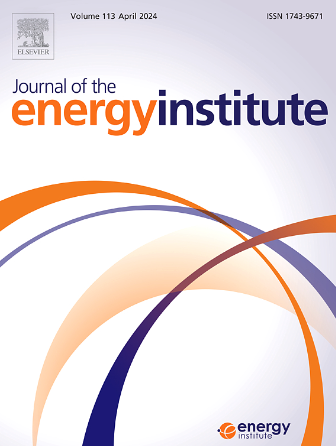空心碳球包封Ni-Mo纳米反应器对木质素衍生物的催化性能提高
IF 5.6
2区 工程技术
Q2 ENERGY & FUELS
引用次数: 0
摘要
本文采用牺牲模板法设计了一种由Ni-Mo纳米颗粒嵌入空心碳球(Ni10Mo1/HCSs)组成的新型纳米反应器。这种三维开放结构对香兰素的加氢脱氧(HDO)具有优异的催化活性,在温和条件下(150°C, 1.0 MPa H2, 3 h), 2-甲氧基-4-甲基苯酚(MMP)的收率达到99%。密度功能理论(DFT)计算表明,H2在Ni(111)表面的吸附能和解离能分别为- 1.46 eV和- 1.62 eV,比在NiMo(111)表面的- 0.36 eV和- 0.94 eV高。香兰素在NiMo(111)表面的吸附能达到−3.71 eV,明显高于Ni(111)表面的吸附能(−3.37 eV)。表征和上述DFT计算结果表明,Mo的加入形成了Ni-Mo合金,在金属Ni和合金位点之间产生了协同效应,增强了H2的吸附/解离和反应物的活化。中空碳骨架(876.24 m2/g)确保高金属分散(≈4.3 nm)和稳定性。该催化剂在5个循环中保持了较强的活性,对其他木质素衍生物具有广泛的适用性。本文章由计算机程序翻译,如有差异,请以英文原文为准。

Hollow carbon sphere encapsulated Ni-Mo nanoreactor for lignin derivatives upgrading with enhanced catalytic performance
Herein, a novel nanoreactor composed of Ni-Mo nanoparticles embedded in hollow carbon spheres (Ni10Mo1/HCSs) is designed via a sacrificial template method. This three-dimensional open structure exhibits exceptional catalytic activity for vanillin of hydrodeoxygenation (HDO), achieving a 99 % yield of 2-methoxy-4-methylphenol (MMP) under mild conditions (150 °C, 1.0 MPa H2, 3 h). Density functional theory (DFT) calculations show that the adsorption and dissociation energy of H2 on the Ni (111) surface are −1.46 eV and −1.62 eV greater than −0.36 eV and −0.94 eV on the NiMo (111) surface, respectively. The adsorption energy of vanillin on the NiMo (111) surface reaches −3.71 eV, obviously higher than that on the Ni (111) surface (−3.37 eV). Characterization and the above DFT calculations results reveal that Mo incorporation forms a Ni-Mo alloy, creating synergistic effects between metallic Ni and alloy sites to enhance H2 adsorption/dissociation and reactant activation. The hollow carbon framework (876.24 m2/g) ensures high metal dispersion (≈4.3 nm) and stability. The catalyst maintains strong activity over five cycles and demonstrates broad applicability to other lignin derivatives.
求助全文
通过发布文献求助,成功后即可免费获取论文全文。
去求助
来源期刊

Journal of The Energy Institute
工程技术-能源与燃料
CiteScore
10.60
自引率
5.30%
发文量
166
审稿时长
16 days
期刊介绍:
The Journal of the Energy Institute provides peer reviewed coverage of original high quality research on energy, engineering and technology.The coverage is broad and the main areas of interest include:
Combustion engineering and associated technologies; process heating; power generation; engines and propulsion; emissions and environmental pollution control; clean coal technologies; carbon abatement technologies
Emissions and environmental pollution control; safety and hazards;
Clean coal technologies; carbon abatement technologies, including carbon capture and storage, CCS;
Petroleum engineering and fuel quality, including storage and transport
Alternative energy sources; biomass utilisation and biomass conversion technologies; energy from waste, incineration and recycling
Energy conversion, energy recovery and energy efficiency; space heating, fuel cells, heat pumps and cooling systems
Energy storage
The journal''s coverage reflects changes in energy technology that result from the transition to more efficient energy production and end use together with reduced carbon emission.
 求助内容:
求助内容: 应助结果提醒方式:
应助结果提醒方式:


